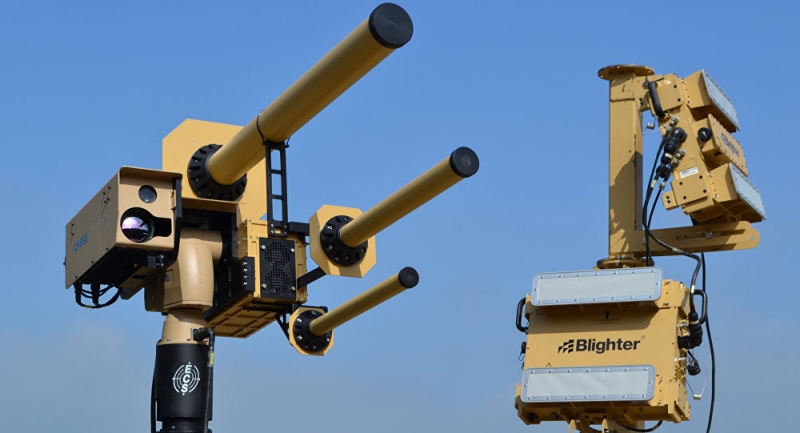
Three UK technology firms have developed an anti-drone ‘death ray’ that can knock an unmanned aerial vehicle out of the sky from up to a mile away. The Anti-UAV Defense System (AUDS) - which is sold by US company Liteye Systems - works by firing focused radio waves at a drone, using the same wavelengths that operators use to fly their vehicles. These covertly jam the signal that links the drone with its controller, making it unresponsive. The AUDS operator can choose to freeze the drone for a short while - in an effort to convince the owner it is malfunctioning - or hold it in the sky until its battery dies and it crashes.
“If I can see it, I can kill it,” said Rick Sondag, executive vice-president of Liteye Systems, at the Commercial Unmanned Aerial Vehicle Expo in Las Vegas this week.
AUDS was designed by three British manufacturers - Blighter Surveillance Systems, Chess Dynamics and Enterprise Control Systems - to combat the threat of malicious micro, mini and larger unmanned aerial vehicles flying in sensitive airspace. The AUDS radar can detect a drone from up to five miles away and visually target it using a camera with thermal imaging capabilities. Not only can it disable a drone, but an ‘optical disruptor’ can also affect the drone’s video feed. The whole process takes as little as 25 seconds.
As the radio spectrum used by drones is fairly narrow, AUDS' brief, focused broadcast won't affect other aircraft or communication systems. Liteye believes the system could be used by airports, governments and law enforcement agencies who are experiencing an increasing amount of problems with drones as UAV numbers continue to rise due to plummeting costs.
"Countering drones is now a global issue and an increasing concern for the military, government and homeland security forces across every continent," said Graham Beall, managing director of Chess Dynamics.
AUDS has been tested in the UK, the US and France, and government organizations in all three countries had been involved in the tests. The US military has been working on its own anti-drone device that fires special tracking projectiles at UAVS, while both China and Boeing have been developing laser weapon systems to take down unmanned aerial vehicles.
See more of the Anti-UAV Defense System in the video below.
https://www.techspot.com/news/62381-anti-drone-death-ray-can-take-out-uavs.html